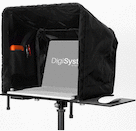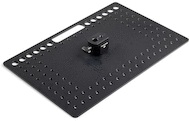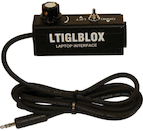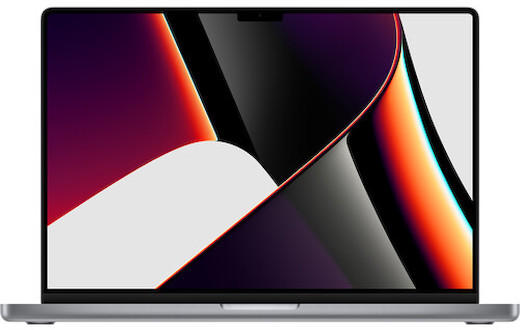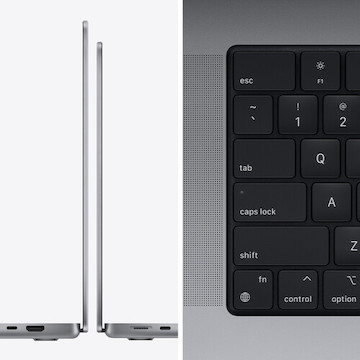The Apple 16" MacBook Pro with M1 Pro Chip – Late 2021 is a refresh of the MacBook Pro line. We also carry the newer Apple 16-inch MacBook Pro with M2 Pro Chip – Early 2023. Key features include:
Apple M1 Pro 10-core processor
16.2" 3456 × 2234 liquid retina XDR display
16GB RAM and 512GB SSD
16-core GPU and 16-core Neural Engine
Newer Version Available. Please note that we also carry the newer, more feature-rich Apple 16-inch MacBook Pro with M2 Pro Chip – Early 2023.
What’s Changed? In short, the Apple 16" MacBook Pro with M1 Pro Chip (Late 2021) has undergone a complete overhaul compared to previous generation MacBooks—an updated M1 Pro processor, offering dramatically improved performance over the original M1 chip, a higher resolution XDR display, a slightly redesigned body better suited to house a wider range of input options, the return of physical command keys, and so much more than we can fit in just one paragraph.
Apple M1 Pro. In 2020, Apple unveiled the M1 chip, a promising processor that allowed Apple to streamline production and the user experience, offering increased performance when compared to Intel chips, especially when running native MacOS software. With the release of the 2021 MacBook Pro lineup, Apple unveiled two more M1 processors. This rental features the M1 Pro, a tiny processor with 33.7 billion transistors (basically, it can do a lot of computing) compared to the M1’s 16 billion. The M1 Pro also features a 10-core CPU, a 16-core GPU, and a 16‑core Neural Engine, and dedicated encode and decode media engines that support H.264, HEVC, and ProRes codecs, all packed into one, rather than using separate chips. When combined with its 16GB RAM, the Apple 16" MacBook Pro with M1 Pro Chip (Late 2021) is really, really fast, up to 2x the speed of the M1-powered MacBooks, and more than 2x the speed of Intel powered MacBooks.
16.2-inch Liquid Retina XDR. When people describe high-end displays, fancy words like “XDR” and “Liquid Retina” can say a lot, but mean very little to most people. What does matter is the 3456 × 2234 resolution (that’s nearly 8 million pixels!), the 1000 nits of sustained brightness (or up to 1600 nits at peak brightness), a 1,000,000:1 contrast ratio, over a billion colors, and ProMotion, a technology that enables a 120Hz variable refresh rate. Colors look vibrant, blacks are truly black, video runs flawlessly, and everyday tests feel fluid and easy, everything a pro user would want out of a MacBook Pro. Video editors can lock in a refresh rate that works for their workflow, and HDR content can be viewed and edited without needing a separate high-end display.
The Return of the Ports. Unexpectedly, Apple brought back many of the ports that were stripped away years ago from the entire MacBook lineup. While users were once required to find a way to plug HDMI, USB, SD cards, and a charger into either 2 or 4 USB-C ports, the newest MacBook Pro’s bring a new range of inputs. Equipped with 3 USB-C Thunderbolt 4 ports (that can accept power from USB chargers!), the MacBook Pro welcomes an HDMI 2.0 port, a UHS-II compatible SD card slot, the familiar 3.5mm audio input, as well as a new MagSafe charging port, capable of accepting 140W of fast charging from a new MagSafe charger. If you’ve used the latest iPhone, or an older MacBook, you’re familiar with MagSafe- rather than plugging in and removing a cable, like USB-C, the cable automatically snaps to/off the MacBook, creating a firm connection for reliable charging, but offering protection for the laptop- if something snags on the cable, it’ll be removed, and the MacBook won’t be sent flying. If you’ve got a fast USB-C charger like previous model MacBooks used, they can still be used to charge this device. When fully charged, the 2021 M1 Pro MacBook Pro can last for up to 21 hours, depending on usage.
Physical Changes. Aside from the display and port selection, a majority of the design language of the MacBook Pro remains consistent with its predecessors. It’s metal unibody is slightly thicker, but not much larger. It comes packed with a 6-speaker system offering up to 80% more bass as well as support for Dolby Atmos spatial audio. The front FaceTime webcam has at last been updated to a crisp 1080p HD resolution, and updated microphones make sure your voice sounds clean and clear while attending Zoom meetings or FaceTiming friends and family. The keyboard hasn’t changed much, adding a black tray for the keys to sit on, but the TouchBar has been replaced with physical command keys. TouchID makes a return nestled in the power button and should be easier to find thanks to the tactile buttons. All this for about 4.7 pounds, just a little heavier than the previous generation MacBook Pro.






